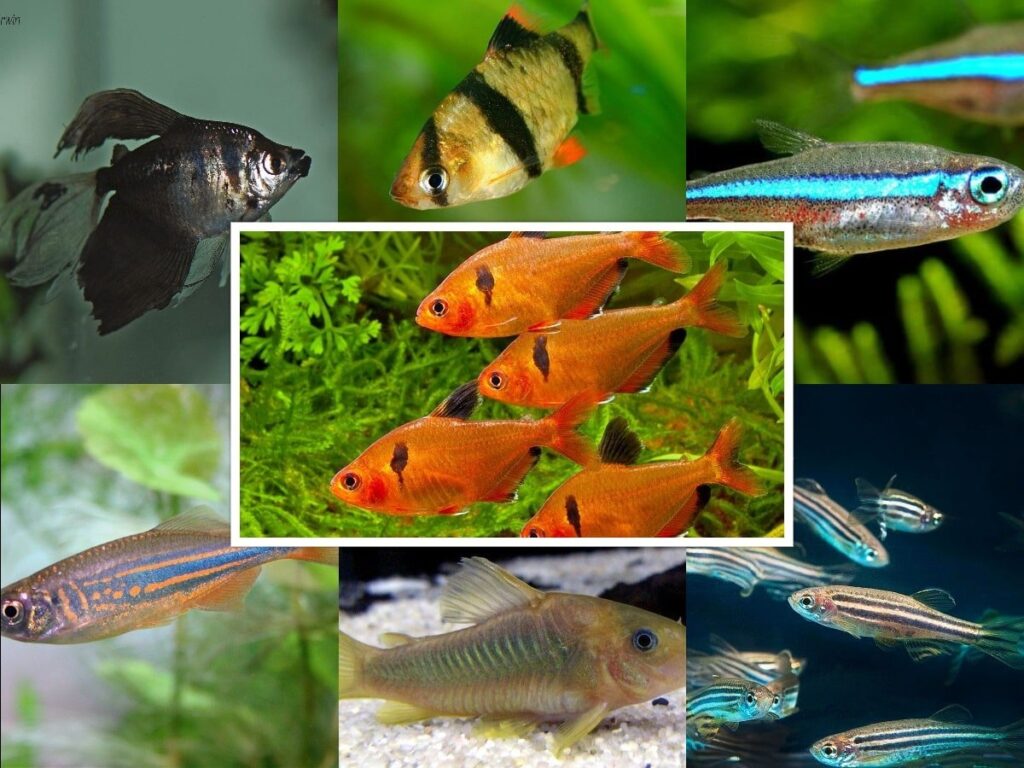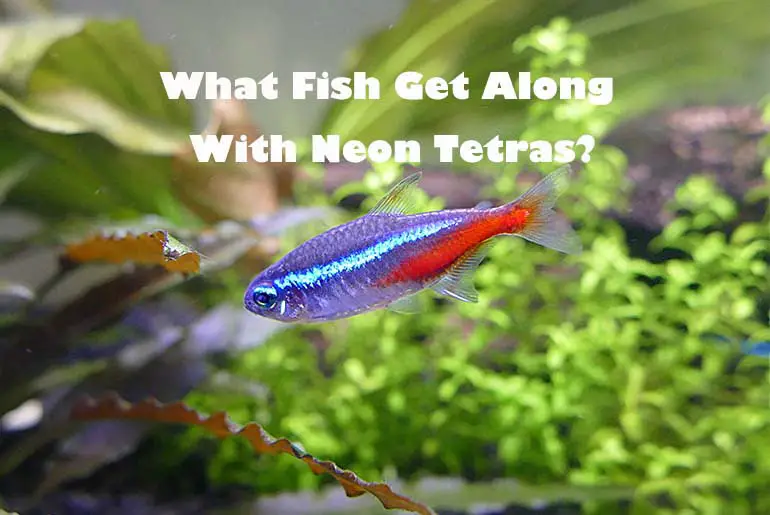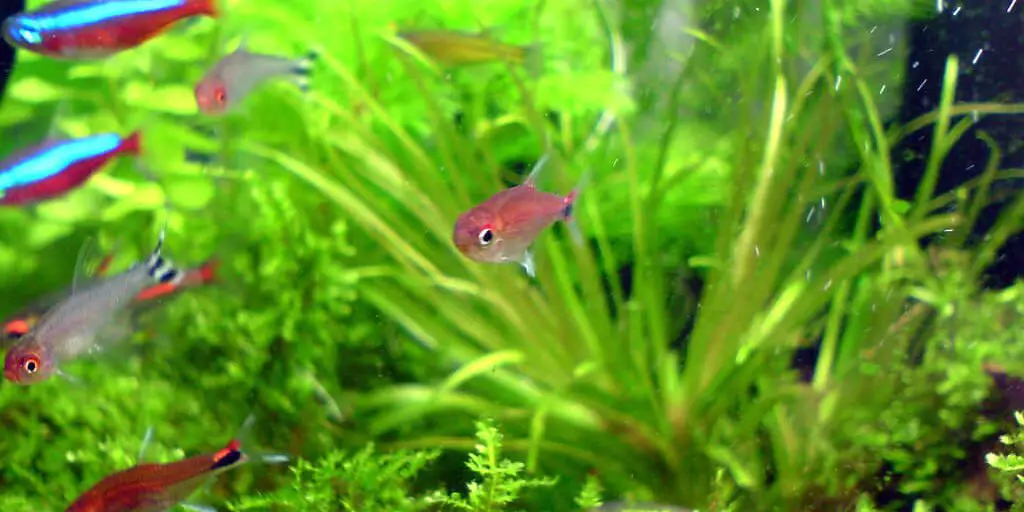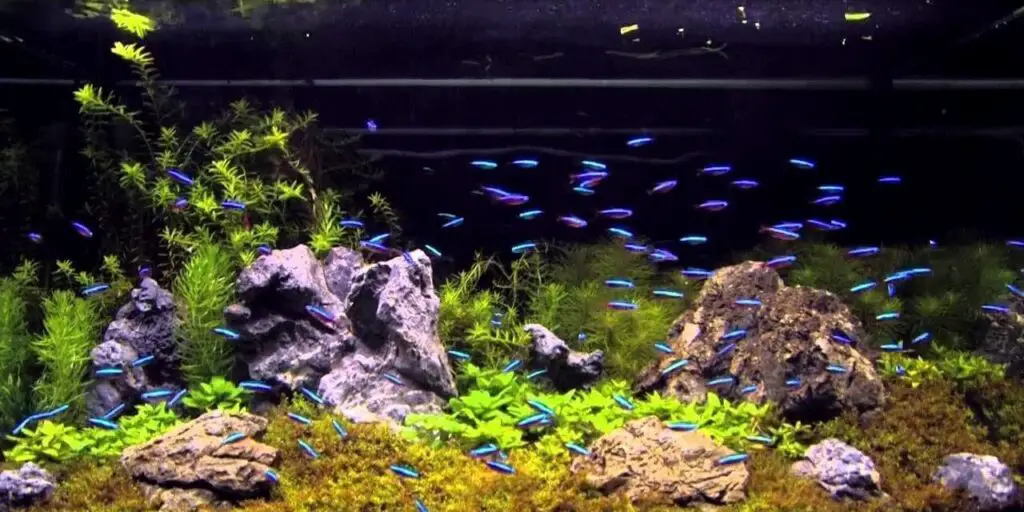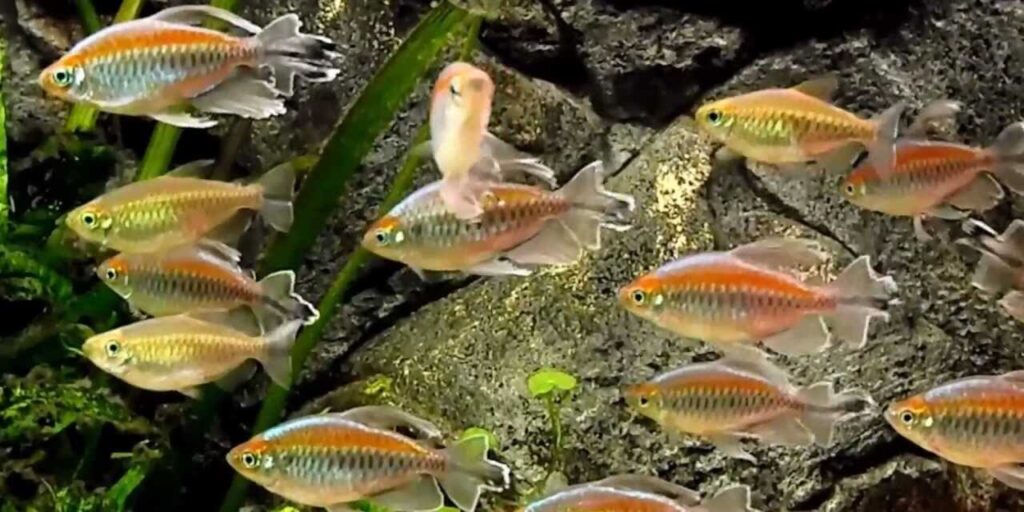Serpae tetras are another beautiful species of the well-known tetra family. These fish are beautiful, but they’re easy to keep making them beginner-friendly, or perfect for an aquarist who’s looking for something low-maintenance. I personally have been keeping these fishes for over a year. Since I am shifting them in a larger tank, I wondered what their perfect tank mates would be. I spent some time researching this and came up with several tank mates and a lot more about serpae tetras.
Since serpae tetras are peace-loving and fast-moving fish, they prefer similar tank mates. Corydoras catfish, neon tetras, cardinal tetras, loaches, giant danios, and back skirt tetras are some of the best serpae tetras tank mates. Any peaceful, bottom-dwelling, and short-finned fish should do well with serpae tetras. Their ideal tank mates should also not be too large or too small than them.
Let’s have a look at why these fishes are great tank mates for serpae tetras. I will also discuss some fishes to avoid and some more important information regarding serpae tetras in the below section.
Serpae Tetra’s General Behavior
Serpae tetras are mostly calm, like the neon tetras and the cardinal. These are fast-moving fish and prefer being in a community tank with a school rather than alone.
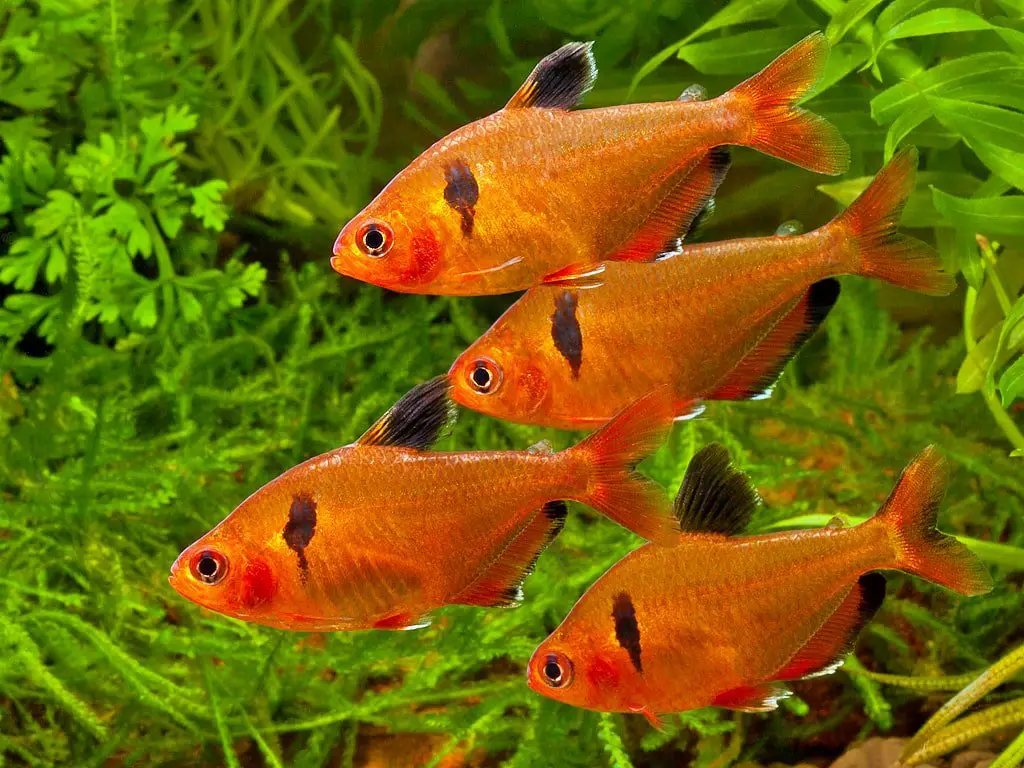
Being a species of the tetra family, you can easily guess that they are schooling fish. Living in a school of at least 5 other Serpae Tetras gives them confidence in a community tank. So, a school of Serpae Tetras will explore and move almost anywhere in the tank. When you keep them alone or in a small school, they spend most of their time hiding.
Serpae Tetras usually swim at the middle and bottom part of the water column. They will swim upwards occasionally during feeding times.
Their swimming habit is rather jerky than elegant. A serpae tetra will swim in short bursts and then stop and again swim similarly. This swim-stop-swim-stop nature can be problematic for other fishes sometimes. Since these fish are active most of the time and are swimming fast, they can show aggressive behavior to slow-moving and long-finned fishes. This might result in fin nipping.
Things To Consider While Choosing Serpa Tetras Tank Mates
Before buying any fish, there are several factors that you must consider. These factors ensure compatibility and reduce the chances of quarrels and territorial brawls. These are the factors to consider in a serpae tetra tankmate.
Tank Size
The Serpae Tetras are active swimmers. So they need a larger tank even though they only grow to 2 inches. For a small school of Serpae tetras, the suitable size is 20-gallons. You should not choose fishes that find this space too congested or small for them.
There might be larger fishes with a calm temperament and are socially capable of living with these tetras. But you must consider whether your tank can host such big fishes or not. Also, no tank is big for any fish. So if you are planning on keeping slightly bigger fish with the serpae tetras, then choose a bigger tank.
Temperament
As I have already mentioned, Serpae Tetras have a calm and peaceful temperament. They will not attack or get into trouble with other fishes until provoked. You should consider this factor in other fishes too. Some fishes out there are born aggressive and are always ready for a fight. So, always consider fish with a calm temperament and non-aggressive and non-territorial behavior. This way, you will prevent your serpae tetra and the other fish too.
Fishes with similar temperament levels form a perfect community. On the other hand, mismatched temperaments can lead to fights for food and space, resulting in fatal injuries.
Food
Serape tetras are omnivores and will accept almost anything that you give them. If you have other carnivores and herbivores, then you must buy your fish food accordingly. So, always prefer tank mates that have similar food preferences. Also, consider the size of food for your serpae tetras and other fish. Some fish pellets can be too large for them.
To ensure that your serpae tetras are getting enough nutrients, you must provide them with regular vegetables and meat treats. Make sure that this doesn’t create a problem for your other fishes. The best way to avoid such problems is by feeding your fish using a feeding ring. You can serve different types of food through all the rings for all kinds of schools in a community tank.
Full Article On Diet: Tetra Fish Diet | What do Tetra Fish Eat: A Complete Guide
Water Parameters
Serpae tetras prefer warm, soft, and slightly acidic water. The optimal parameter levels are:
Temperature: 72°F to 79°F
pH: 5 to 7.8
Hardness: 5 to 25 dGH
These parameters can be slightly uncomfortable for other aquarium fishes. For example, an angelfish would not survive in acidic water that the serpae can comfortably thrive in.
Fishes come to your aquarium from all around the world and evolve according to their natural environment. So it is best not to make a fish suffer in another fish’s favorite conditions. In this case, choose those fish that have similar preferences to that of the serpae tetras.
Swimming Habits
Every fish has somewhat different swimming habits. Some like to move around a lot more often than the others. These fish, which prefer swimming, need more space. Serpae tetras who love swimming can also nip the fins of other slow-moving fishes. This is basic fish nature, and you can do nothing about it. So there always remains a social barrier between those fish who swim more and those who swim less.
To avoid all the tensions and brawls, avoid keeping slow fish that could be targeted for fin nipping.
Serpae Tetras Tank mates
Looking at all the above criteria, it is clear that Serpae tetras prefer fast-moving, similar-sized, and peace-loving tankmates. Many fishes satisfy these traits. Here is a list of some of the best tankmates for serpae tetras.
Black Skirt Tetra
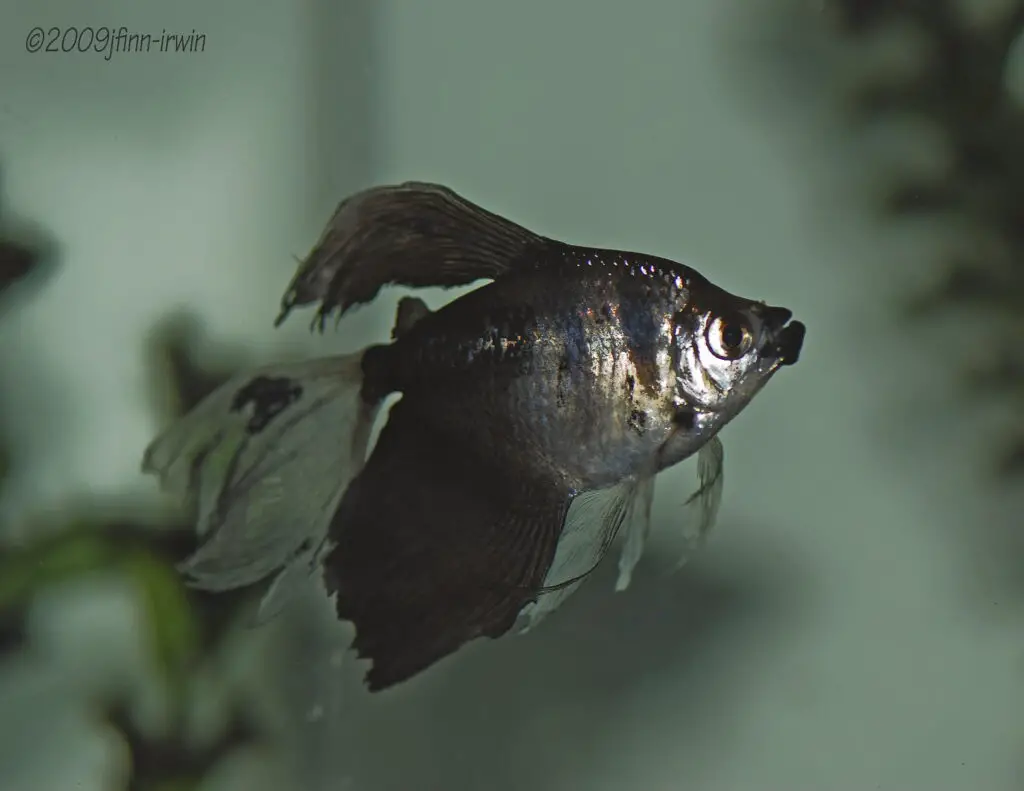
Also known as the black widow tetras, these fish are peaceful and playful fish. It loves hanging around with its own kind and won’t interfere with other fishes until provoked. Although it needs slightly alkaline water, a neutral pH level can be good for both serpae tetras and black widow tetras.
Black skirt tetras are extremely sociable creatures and need to be in a community tank. Always keep them in a school of at least 5.
Like serpae tetras, they swim in a jerky motion and also need quite a lot of space. But these two species won’t get into a fight until you have a large tank enough for both of them to swim freely. Black skirt tetras will nip the fins of slow-moving fish with flowering fins and will get easily bullied by larger fishes.
Giant Danio
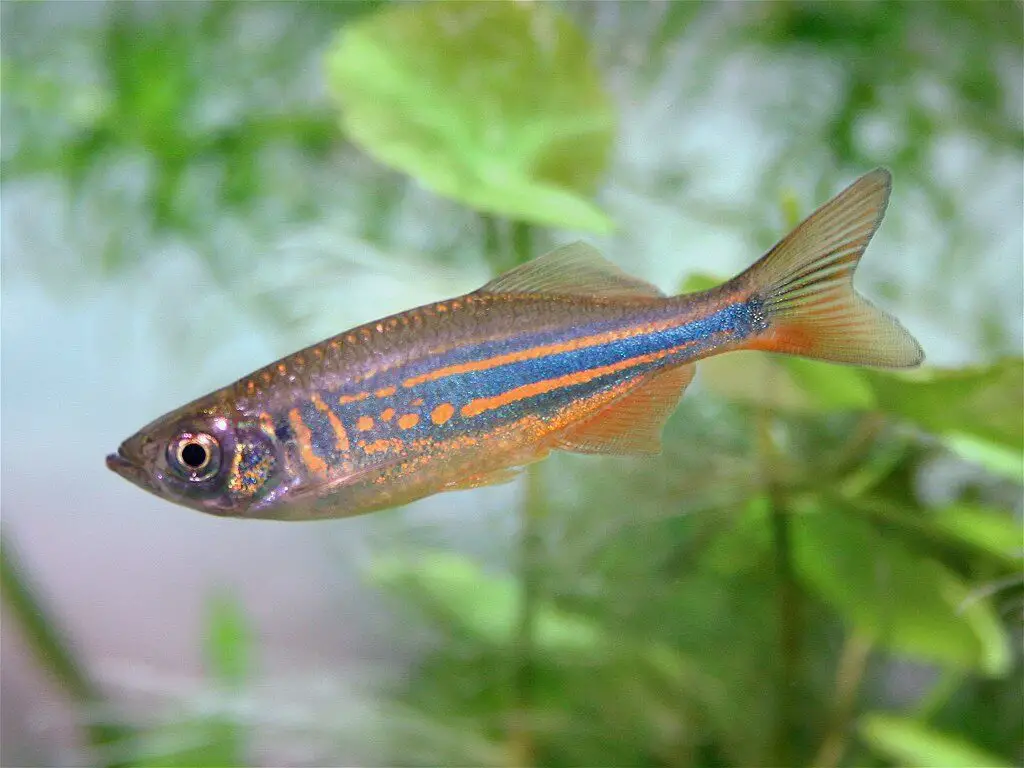
Growing up to 4 inches, these are one of the largest danios. Despite their size, these fish are peaceful and show calm temperament towards smaller fishes like serpae tetras.
This fish prefers a long horizontal tank. Also, be sure to keep a hood because they are suicidal jumpers. Ginat danios prefer to live in a school of at least a half dozen. These fish can be a great addition to cichlid tanks too. This clearly shows their versatility and ability to adjust with different kinds of fishes.
Loaches
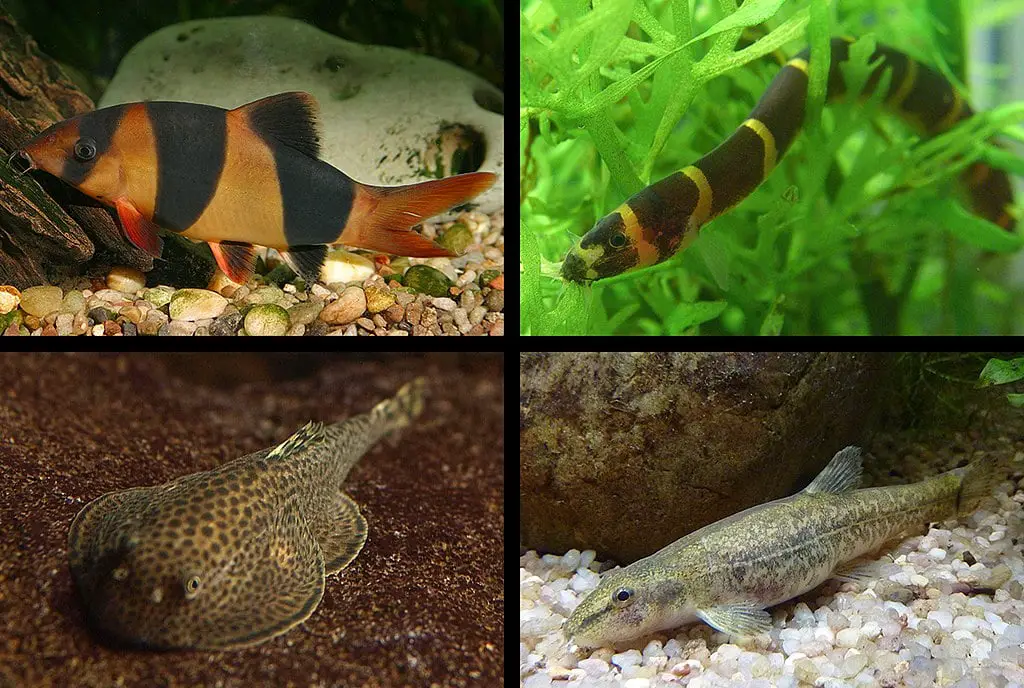
These are extreme bottom-dwelling scavengers that live in their own world. These fish rely on remaining food and debris at the bottom of the tank. So, you won’t see them with serpae tetras for most of the time.
These fish are generally happy within their own group. Their favorable conditions are also similar to that of serpae tetras. So, loaches are the obvious tank mates for serpae tetras.
Cardinal And Neon Tetras
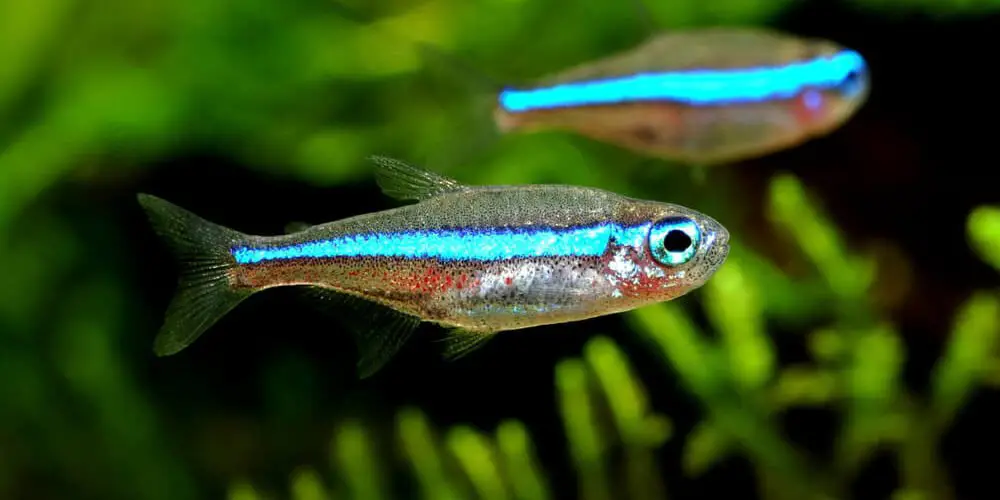
You can pick any tetras and expect them to live peacefully with other tetras. This is the fascinating thing about this family. Cardinal tetras eating habits are similar to serpae tetras. At the same time, a neon tetra’s living conditions are similar to that of serpae tetras. All of these species love to swim around and have similar swimming habits.
Since neon tetras don’t take up much space, I recommend them ideal tank mates for serpae tetras. But if you have a large enough tank then, you can go for cardinal tetras too.
Corydoras Catfish
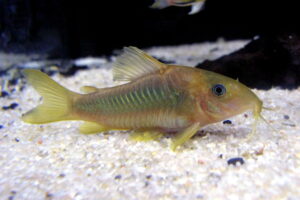
When it comes to bottom dwellers like corydoras catfish, they have a certain importance in a community tank. Their debris feeding habit can clean up the tank and get rid of ammonia spikes. The albino version of this fish is really beautiful, and you won’t be able to resist yourself from buying one.
Spending most of their time at the bottom level, they don’t take up much space and can comfortably live in serpae tetra’s environment. 5-6 corydoras catfish can be great tank mates for serpae tetras.
Tiger Barbs
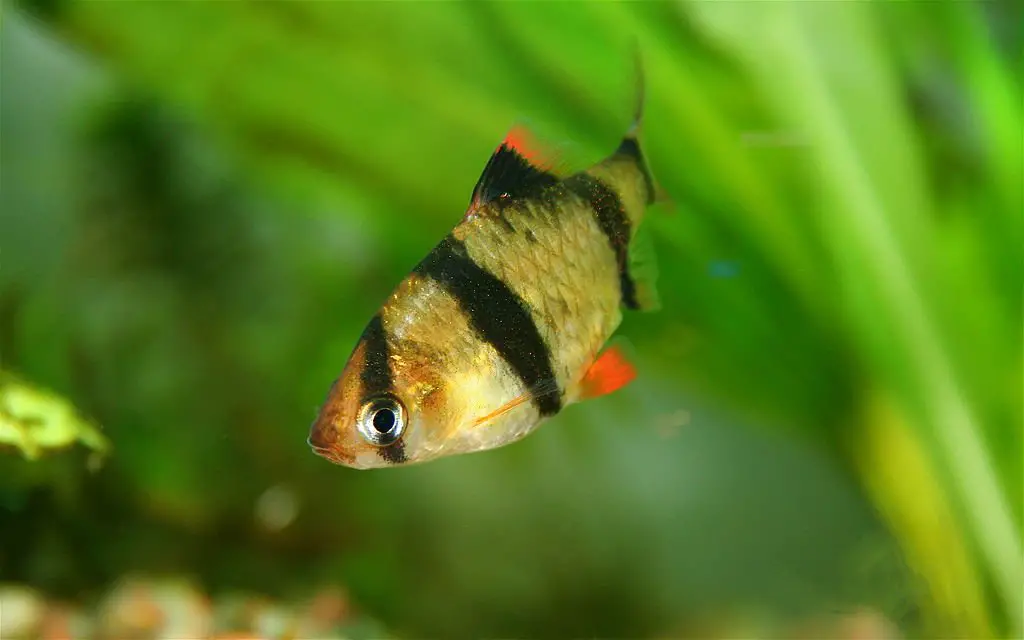
Tiger barbs are schooling fish and prefer to live in a group of at least 5-6 fish. They can be semi-aggressive to aggressive depending upon the school size and tank mates around them. In a large group, these fish spend most of their time chasing each other and leave other species of fish alone. But when you only keep 2-3 of them together, tiger barbs show fin nipping behavior.
Their vibrant colors and active swimming nature can help them perfectly coexist with serpae tetras. The living conditions and diet of tiger barbs are similar to that of serpae tetras too.
Zebra Fish
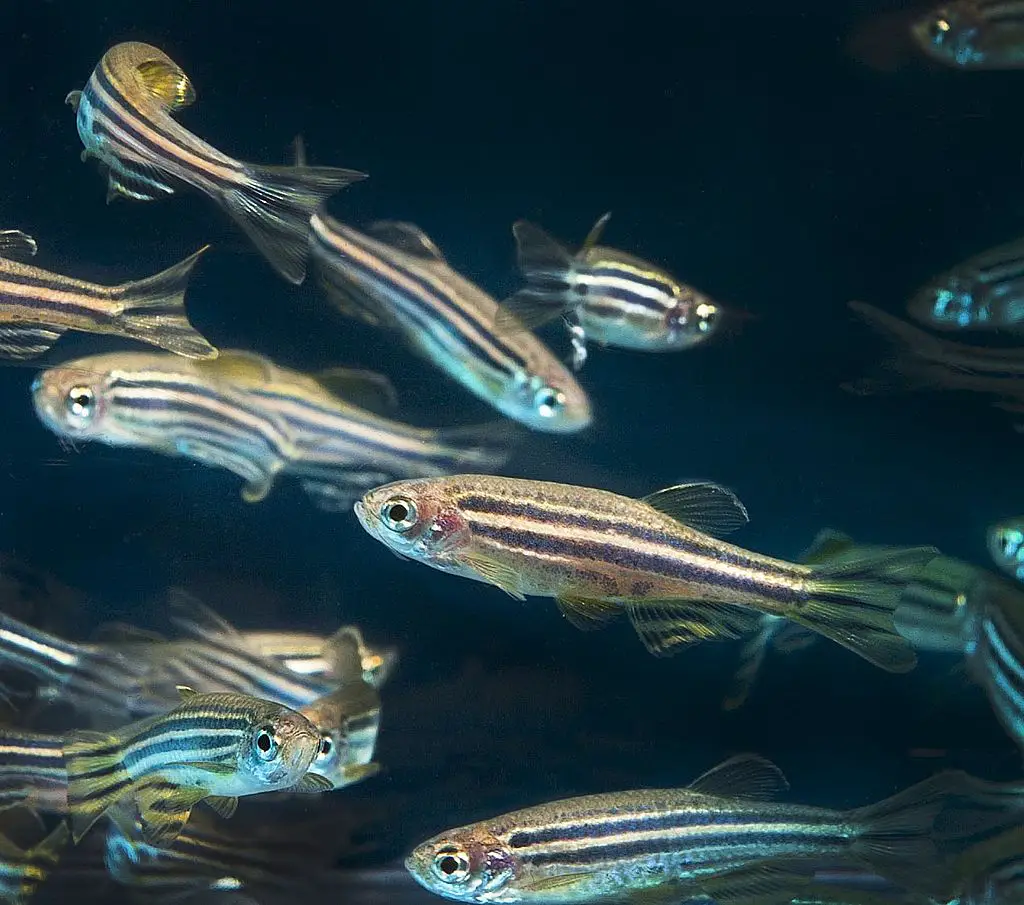
Zebra danios are extremely fast swimmers and a perfect match for your serpae tetras. Despite their smaller size, serpae tetras can coexist with these fish quite peacefully. Zebrafish only attacks slow-moving and long-finned fishes in the tank. These fish are sensitive when it comes to their school size, so always keep at least 6 of them.
Their playful and non-aggressive hierarchical system doesn’t allow them to shift focus to other tankmates. Instead, these fish enjoy playing around with their species.
Which Fish Should You Avoid?
Serpae tetras can’t just tolerate slow-moving, long-barbel, and long-finned fishes. When they see flowering fins around them, these fish will just start nipping. You should avoid fishes like bettas, angelfish, and guppies at all costs. Guppies are quite peaceful fish, and you might think that they can coexist peacefully with serpae tetras. But their long fins can trigger aggressive behavior in serpae tetras.
The presence of big aggressive cichlids can be problematic too. Cichlids look at these tetras as food and nothing else.
Also, avoid any smaller fish than serpae tetras. The fish tend to show semi-aggressive behavior and can be dominating towards small fish.
Buying Guide For Serpae Tetra
We should never generalize any fish’s behavior. A fish shows behavior according to the environment that it is raised in. For example, a fish in a community tank grows out to be more social than the one grown alone. To get the best out of your serpae tetra follow this buying guide:
- Since serpae tetras are active swimmers, only choose the ones that are constantly roaming here and there and exploring the tank. The inactive serpae tetras have a higher chance of bringing disease and parasites in your tank.
- To establish a healthy community, choose serape tetras from a community tank. These tetras have higher chances of getting along with other fishes.
- For a proper school, buy 4 females and a male.
- Try to go for juveniles rather than fully grown adults.
Conclusion
All in all, serpae tetras can be classifies as semi-aggressive fish, and there are quite a lot of tank mates suitable for them. If you want to keep these tetras for their maximum lifetime i.e., 7 years, then choosing the right tank mates is important. Some of the hardiest fish make the perfect tank mates of these tetras, which is a good thing.
I think I have included every information regarding the serpae tetra tank mates. Any feedback or recommendations will be heartily welcomed in the comment section below.
Reference
Image Credit:
- https://en.wikipedia.org/wiki/en:Creative_Commons
- https://creativecommons.org/licenses/by-sa/2.0/deed.en
- https://creativecommons.org/licenses/by-sa/4.0/deed.en
- https://creativecommons.org/licenses/by-sa/2.5/deed.en
